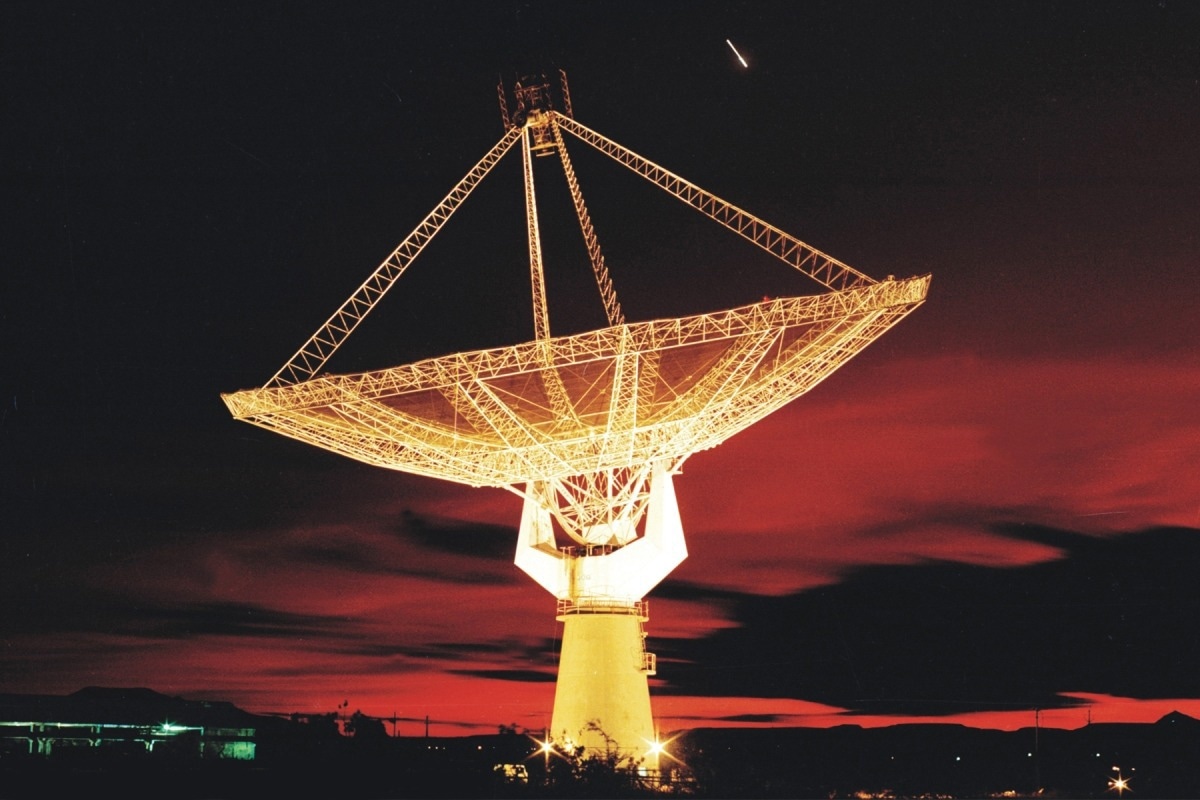A new study analyzes the development of stars in faraway galaxies. For a long time, astronomers have been trying to answer this question by detecting radio signals that have been emitted by galaxies in the vicinity.

One of the dishes of the Giant Metrewave Radio Telescope (GMRT) near Pune, Maharashtra, India. Image Credit: National Centre for Radio Astrophysics
However, such signals tend to become weaker when the galaxy is further away from the Earth, thereby making it hard for make radio telescopes to catch the signal.
Now, scientists from Montreal and India can receive radio signals from the majority of distant galaxies at a particular wavelength called the 21-cm line. With the availability of the Giant Metrewave Radio Telescope in India, this is the first time that this type of radio signal has been detected at such a large distance.
A galaxy emits different kinds of radio signals. Until now, it’s only been possible to capture this particular signal from a galaxy nearby, limiting our knowledge to those galaxies closer to Earth.
Arnab Chakraborty, Post-Doctoral Researcher, McGill University
Chakraborty added, “But thanks to the help of a naturally occurring phenomenon called gravitational lensing, we can capture a faint signal from a record-breaking distance. This will help us understand the composition of galaxies at much greater distances from Earth.”
Chakraborty was supervised by Professor Matt Dobbs.
A Look Back in Time to the Early Universe
Initially, the scientists were capable of detecting the signal from a distant star-forming galaxy called SDSSJ0826+5630 and could quantify its gas composition. The scientists noted that the gas content of the atomic mass of this specific galaxy is almost twice the mass of the stars that are visible to humans.
The research group detected the signal that was emitted from this galaxy while the universe was just 4.9 billion years old. This allows scientists to glance into the mysteries of the early universe.
It’s the equivalent to a look-back in time of 8.8 billion years.
Arnab Chakraborty, Post-Doctoral Researcher, McGill University
Chakraborty studies cosmology at McGill’s Department of Physics.
Picking Up the Signal from a Distant Galaxy
Gravitational lensing magnifies the signal coming from a distant object to help us peer into the early universe. In this specific case, the signal is bent by the presence of another massive body, another galaxy, between the target and the observer. This effectively results in the magnification of the signal by a factor of 30, allowing the telescope to pick it up.
Nirupam Roy, Study Co-Author and Associate Professor, Department of Physics, Indian Institute of Science
The scientists feel that these outcomes illustrate the possibility of finding distant galaxies in identical situations with gravitational lensing. Also, it paves the way for some interesting new chances to probe the cosmic evolution of galaxies and stars with low-frequency radio telescopes that are available at present.
The Giant Metrewave Radio Telescope was constructed and made to function by NCRA-TIFR. The study was financially supported by McGill University and the Indian Institute of Science.
Journal Reference:
Chakraborty, A & Roy, N (2022) Detection of H I 21 cm emission from a strongly lensed galaxy at z ∼ 1.3. Monthly Notices of the Royal Astronomical Society. doi.org/10.1093/mnras/stac3696.